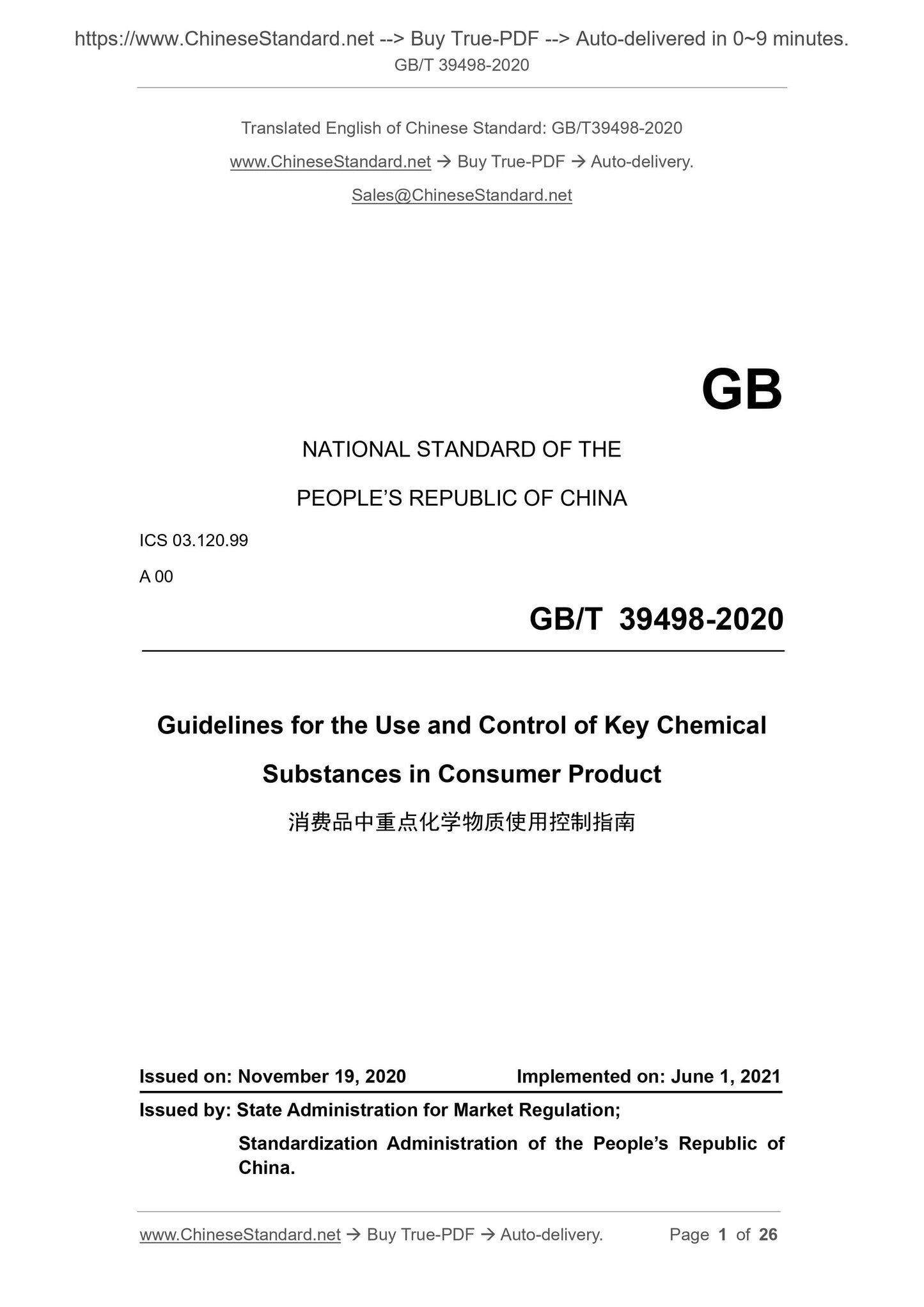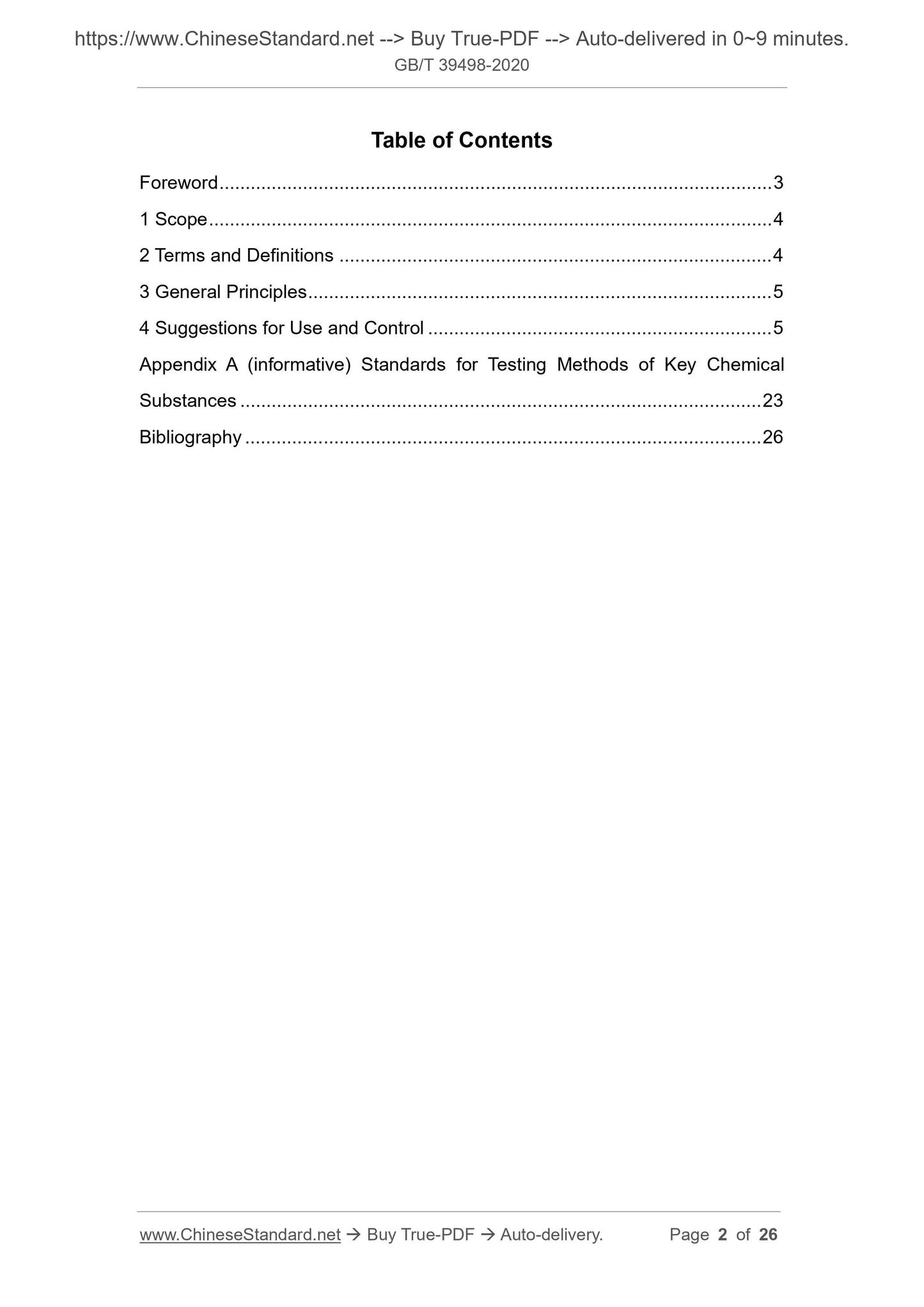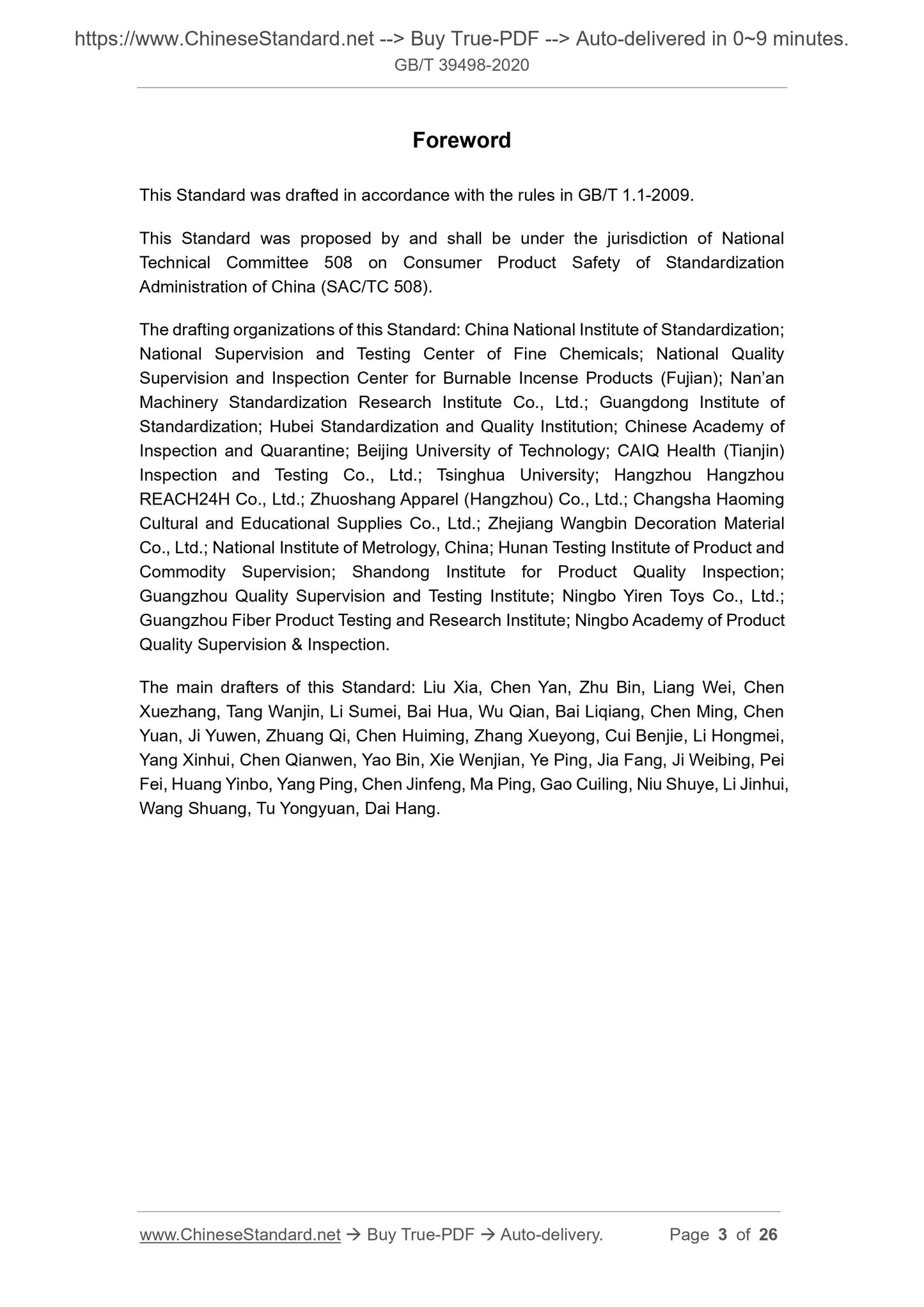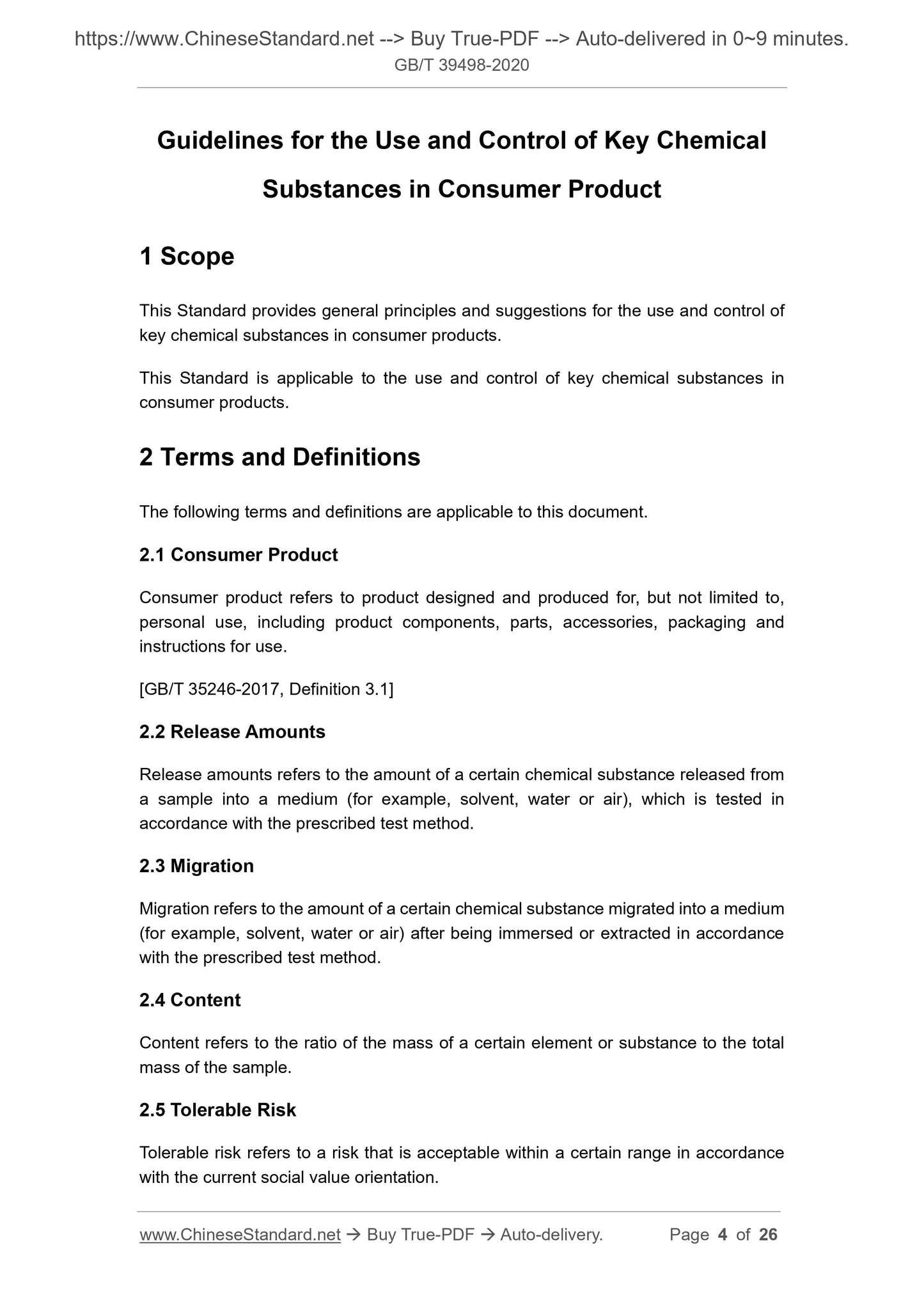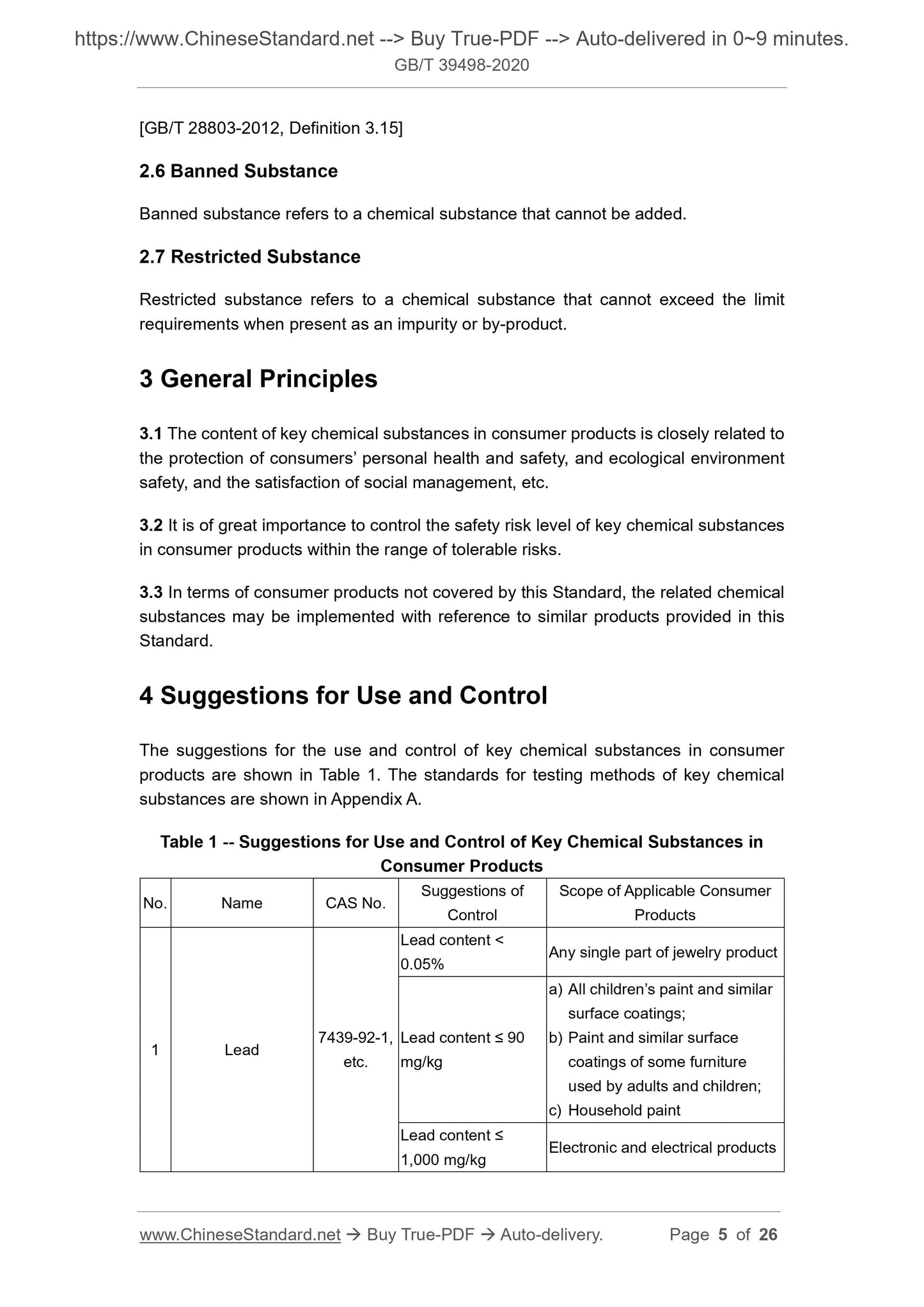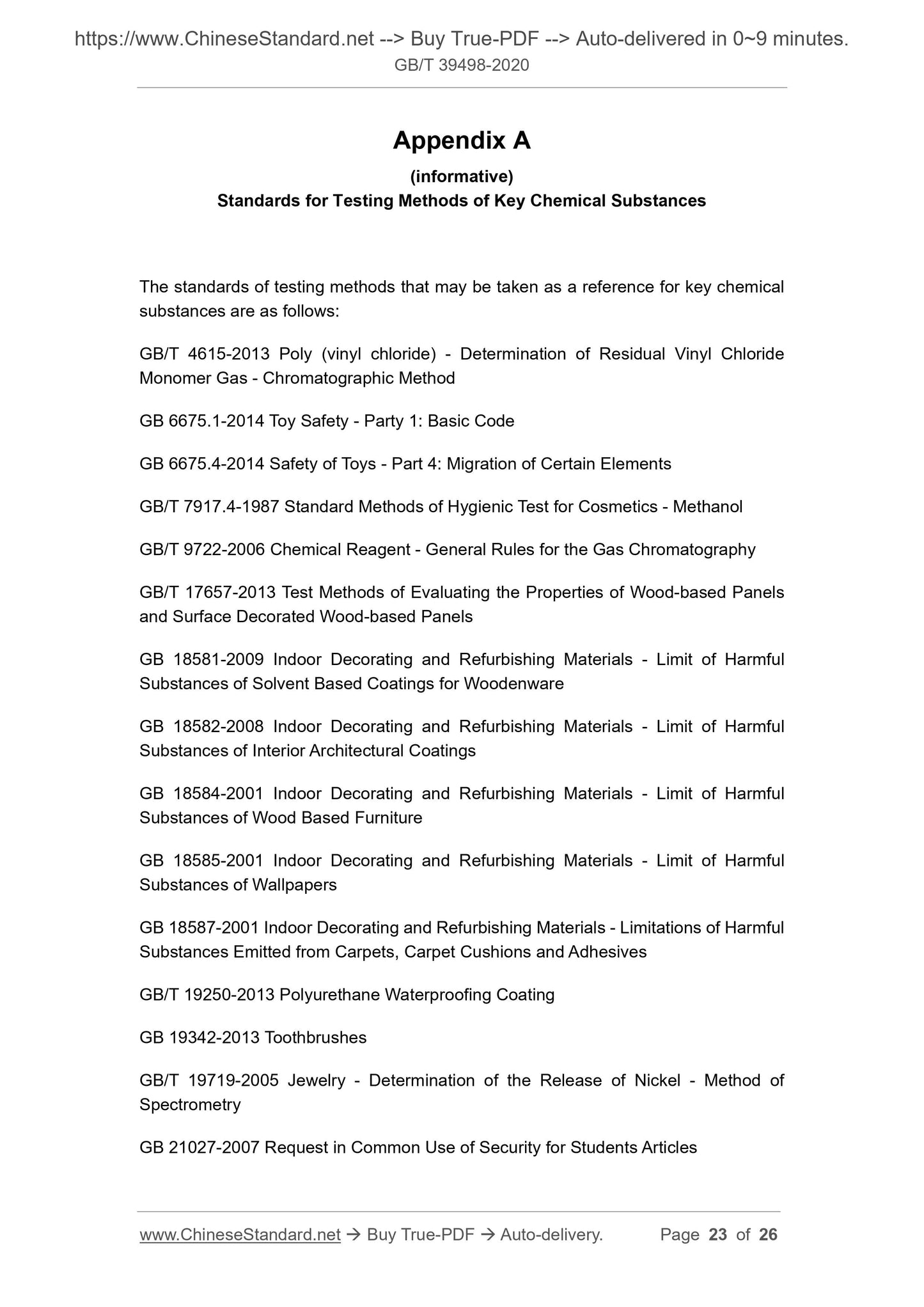1
/
of
6
www.ChineseStandard.us -- Field Test Asia Pte. Ltd.
GB/T 39498-2020 English PDF (GB/T39498-2020)
GB/T 39498-2020 English PDF (GB/T39498-2020)
Regular price
$265.00
Regular price
Sale price
$265.00
Unit price
/
per
Shipping calculated at checkout.
Couldn't load pickup availability
GB/T 39498-2020: Guidelines for the Use and Control of Key Chemical Substances in Consumer Product
Delivery: 9 seconds. Download (and Email) true-PDF + Invoice.Get Quotation: Click GB/T 39498-2020 (Self-service in 1-minute)
Newer / historical versions: GB/T 39498-2020
Preview True-PDF
Scope
This Standard provides general principles and suggestions for the use and control ofkey chemical substances in consumer products.
This Standard is applicable to the use and control of key chemical substances in
consumer products.
Basic Data
| Standard ID | GB/T 39498-2020 (GB/T39498-2020) |
| Description (Translated English) | Guidelines for the Use and Control of Key Chemical Substances in Consumer Product |
| Sector / Industry | National Standard (Recommended) |
| Classification of Chinese Standard | A00 |
| Classification of International Standard | 03.120.99 |
| Word Count Estimation | 20,278 |
| Date of Issue | 2020-11-19 |
| Date of Implementation | 2021-06-01 |
| Regulation (derived from) | National Standard Announcement No. 26 of 2020 |
| Issuing agency(ies) | State Administration for Market Regulation, China National Standardization Administration |
| Summary | This standard specifies general principles and usage control recommendations for key chemical substances in consumer products. This standard applies to the use control of key chemical substances in consumer products. |
Share
